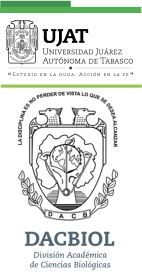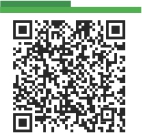SEAWEED: FOR FOOD, MEDICINE AND INDUSTRY
DOI:
https://doi.org/10.19136/kuxulkab.a16n29.425Resumen
Seaweeds are marine macro-algae found growing throughout the world oceans and seas and none is found to be poisonous. Most of them are green (about 1,200 species), brown (about 1,750 species) or red (about 6,000 species), and most are attached by holdfasts, which have just an anchorage function, although a particularly efficient one. Why seaweed? People do not have a very good impression of seaweeds. They think that seaweeds are just some stinking, slimy nuisance that are washed up on clean sandy beaches. Most people do not realize how important seaweeds are, both ecologically and commercially. In fact, seaweeds are crucial primary producers in oceanic food webs. They are rich both in minerals and essential trace elements, also valuable sources of food, micronutrients, and raw materials for the pharmaceutical industry.Métricas
Citas
Chapman, V.J. 1970. Seaweeds and Their Uses. Chapman & Hall. London. 334 p.
Critchley, A. 1997. Seaweed resources. In: Seaweed Cultivation and Marine Ranching. Ohno, M. & Critchley, A. (Eds). Yokosuka, Pp.1-6.
FAO. 2002. The State of World Fisheries and Aquaculture. FAO Web Site. Food and Agricultural Organization of United Nations, Rome. http://www.fao.org/
FAO. 2004. The state of world fisheries and aquaculture 2004. Food and Agriculture Organization of the United Nations, Rome. ftp://ftp.fao.org/docrep/fao/007/y5600e/y5600e01
FAO. 2006a. State of world aquaculture. Food and Agriculture Organization of the United Nations, Rome. http: //www.fao.org/doc rep/009/a0699e/ A0699E00.htm
FAO. 2006b. State of world aquaculture. Food and Agriculture Organization of the United Nations, FAO Fisheries Technical Paper 500, Rome. http://www.fao.org/docrep/009/a0874e/a0874e00.htm
Fusetani, N. 1987. Marine metabolites which inhibit development of Echinoderm embryos. In: Biorganic Marine Biochemistry. Sheuer, P.J (Ed). Springer-Verlag, Berlin, 1: 61-92
Guiry, M. 2009. Seaweed site. Seaweed Web Site, National University of Ireland, Galway. http://www.seaweed.ie/algae/seaweeds.html
Harlin, M.M. 1996. Allelochemistry in marine macroalgae. C.R.C. Crit. Re. Plant. Sci., 5: 237-249
Hay, M.E. 1996. Marine Chemical Ecology: what's known and what's next? J. Exp. Mar. Biol.Ecol., 2000: 103-134
Huisman, J.M. 2000. Marine Plants of Australia. University of Western Australia Press, Nedlands. 300 p.
James, D. 1990. Summary of international production and demand for seaweed colloids. In: Technical Resource Papers, Regional Workshop on the Culture and Utilization of Seaweeds. Vol. II. Regional seafarming Development and Demonstration Project. RAS/90/002. FAO/UNDP Seafarming Project. August 1990. Cebu City, Pp: 143-144.
Khan, S.I. & Satam, S.B. 2003. Seaweed mariculture: scope and potential in India. Aquaculture Asia, 4(4): 26-28
Kubanek, J., Jensen, P.R., Keifer, P.A., Sullards, C., Collins, D.O. & Fenical, W. 2003. Seaweed Resistance to Microbial Attack: A targeted chemical defense against marine fungi. PNAS, 10(12): 6916-6921
Madlener, J.C. 1977. The Seavegetable Book. Carlkson Carlkson N. Potter, Inc. New York. 288 p.
McHugh, D.J. 1991. Wordlwide distribution of commercial resources of seaweeds including Gelidium. Hydrobiologia, 221: 19-29
McHugh, D.J. 2003. A Guide to the Seaweed Industry. FAO Fisheries Techinal Paper 441. FAO and Agriculture Organization of the United Nations, Rome. 127 p.
Nadu, T. 2002. Seaweed power: alternative health. Samudra March, 2: 19-20
Novaczek, I. 2001. A Guide to the Common and Edible and Medicinal Sea Plants of the Pacific Island. University of the South Pacific. 40 p.
Ohno, M. 1997. Cultivation of the green algae, Monostroma and Enteromorpha and Enteromorpha “Aonori”. In: Seaweed Cultivation and Marine Ranching. Ohno, M. & Crtichley, A. 1997 (Eds). JICA.Yokosuka, Pp: 7-15.
Pavia, H. & Brock, E. 2000. Extrinsic factors influencing phlorothannin production in the brown alga Ascophyllum nodosum. Mar. Ecol. Prog. Ser., 193: 285-294
Pavia, H., Cervin, G., A. Lindgren. & Aberg, P. 1997. Effects of UV-radiation and simulated herbivory on phlorothannins in the brown alga Ascophylum nodosum. Mar. Ecol. Prog. Ser., 157: 139-146
Payri, C., N'Yeurt, A.D.R. & Orempuller, J. 2000. Algues de Polynésie Française. Imprimé à Singapour. Au Vent des Îles. 320 p.
Richards-Radjadurai, N. 1990. Production, marketing and trade of seaweeds. In: Technical Resources Papers, Regional Workshop on the Culture and Utilization of Seaweeds. Vol II. Regional Seafarming Development and Demonstration Project. RAS/90/002. FAO/UNDP Seafarming Project. August 1990. Cebu City, Pp: 149-180.
Sieburth, J.M. & Conover, J.T. 1965. Sargassum tannin, an antibiotic which retards fouling. Nature, 208: 52-53
Stein, J.R. & Borden, C.A. 1984. Causative and beneficial algae in human disease conditions: a review. Phycologia, 23: 485-501
Tanaka, J. & Nakamura, T. 2004. Japanese Seaweeds. Tokyo. 248 p.
Tokida, J. 1954. The Marine Algae of Southern Saghalien. Reprinted from the Memoirs of the Faculty of Fisheries Hokkaido University, 2(1): 264
Toma, T. 1997. Cultivation of the brown alga, Cladosiphon okamuranus “Okinawa-mozuku” In Seaweeds Cultivation and Marine Ranching. Ohno, M. & Critchely, A (Eds) JICA. Yokosuka, Pp: 51-56.
Trono, G. 1997. Eucheuma and Kappaphycus: taxonomy and cultivation. In Seaweed Cultivation and Marine Ranching. Ohno, M., & Cricthley, A (Eds). JICA. Yokosuka, Pp: 75-88.
Trono, G. & Toma, T. 1997. Cultivation of the green alga Caulerpa lentilifera. In: Seaweed: cultivation and marine ranching. Ohno, M., & Cricthley, A (Eds). JICA. Yokosuka, Pp: 17-23.
Tsutsui, I., Huybh, Q.N., Nguyên, H.D., Arai, S. & Yoshida, T. 2005. The Common Marine Plants of Southern Vietnam. Japan Seaweed Association. Kochi. 250 p.
Descargas
Publicado
Cómo citar
Número
Sección
Licencia
Los autores que publiquen en Kuxulkab' aceptan las siguientes condiciones como política de acceso abierto:
1. Que conservan los derechos de autor y ceden a la revista el derecho de la primera publicación, con el trabajo registrado con la licencia de atribucion de "Creative Commons", que permite a terceros utilizar lo publicado siempre que mencionen la autoría del trabajo y a la primera publicación en esta revista.
2. El autor puede realizar otros acuerdos contractuales independientes o adicionales para la distribución no exclusiva de la versión del artículo publicado en esta revista, como por ejemplo incluirlo en un repositorio institucional o publicarlo en un libro, siempre que se indique claramente que el trabajo se publicó por primera vez en esta revista.
















